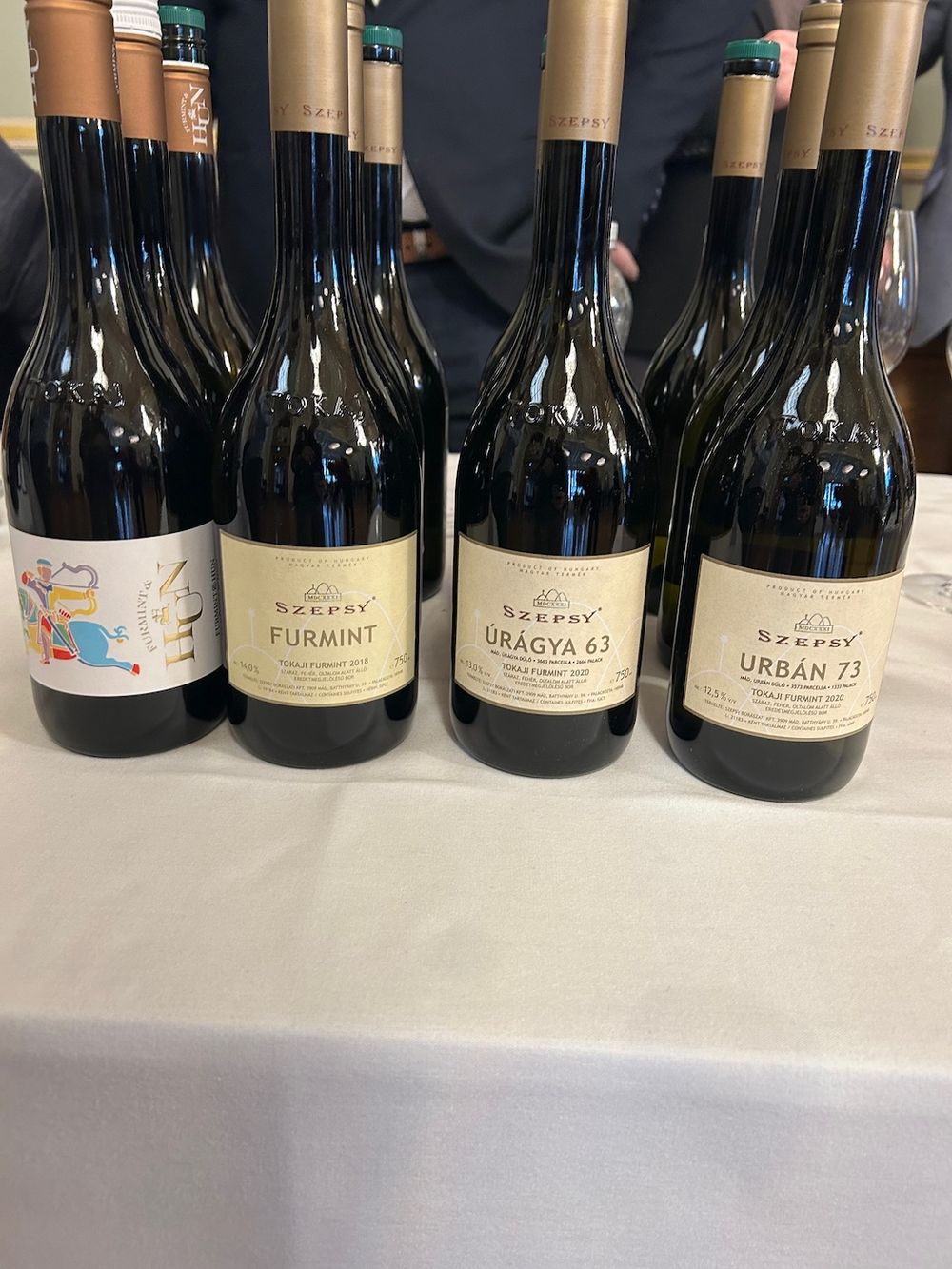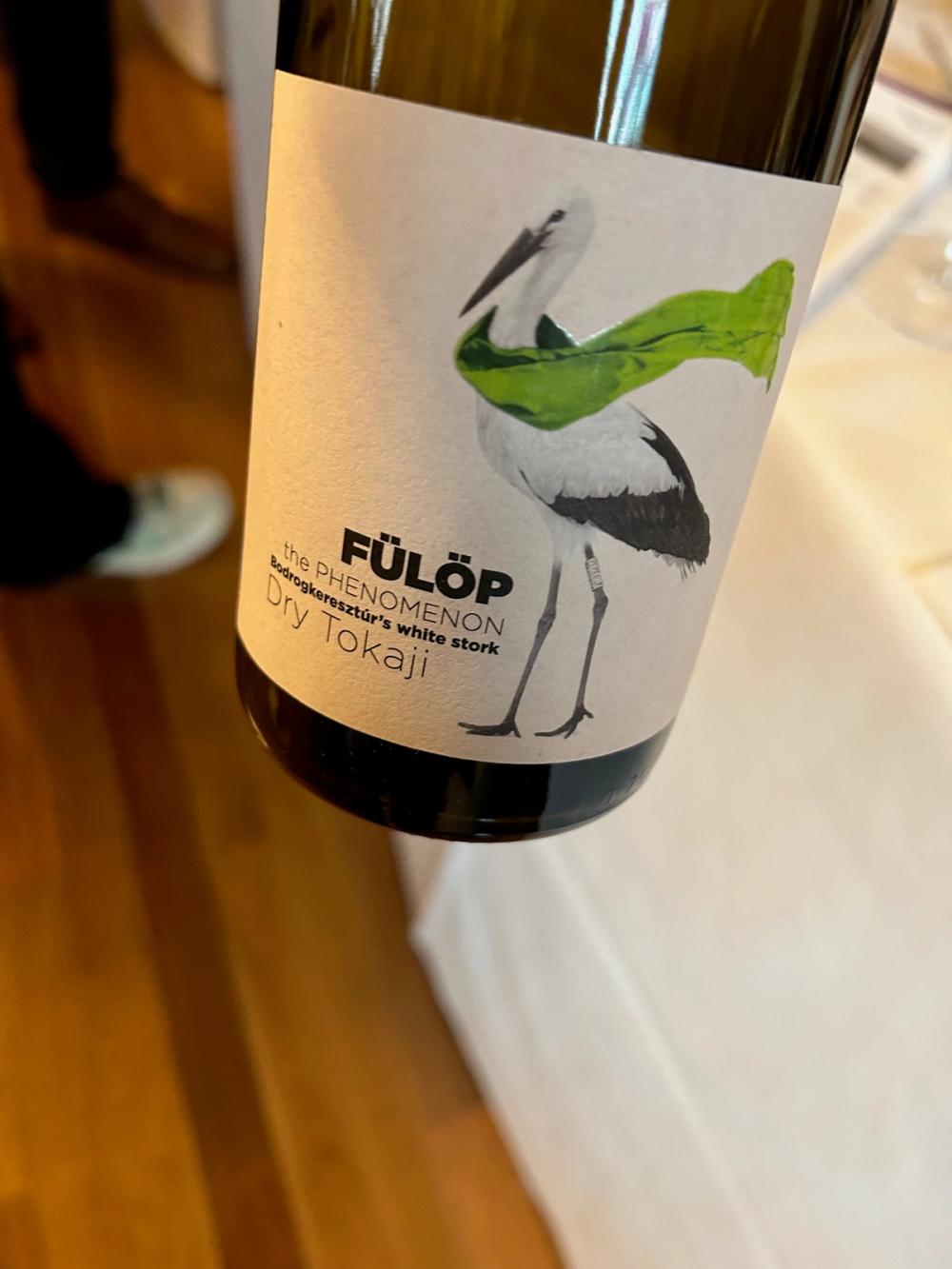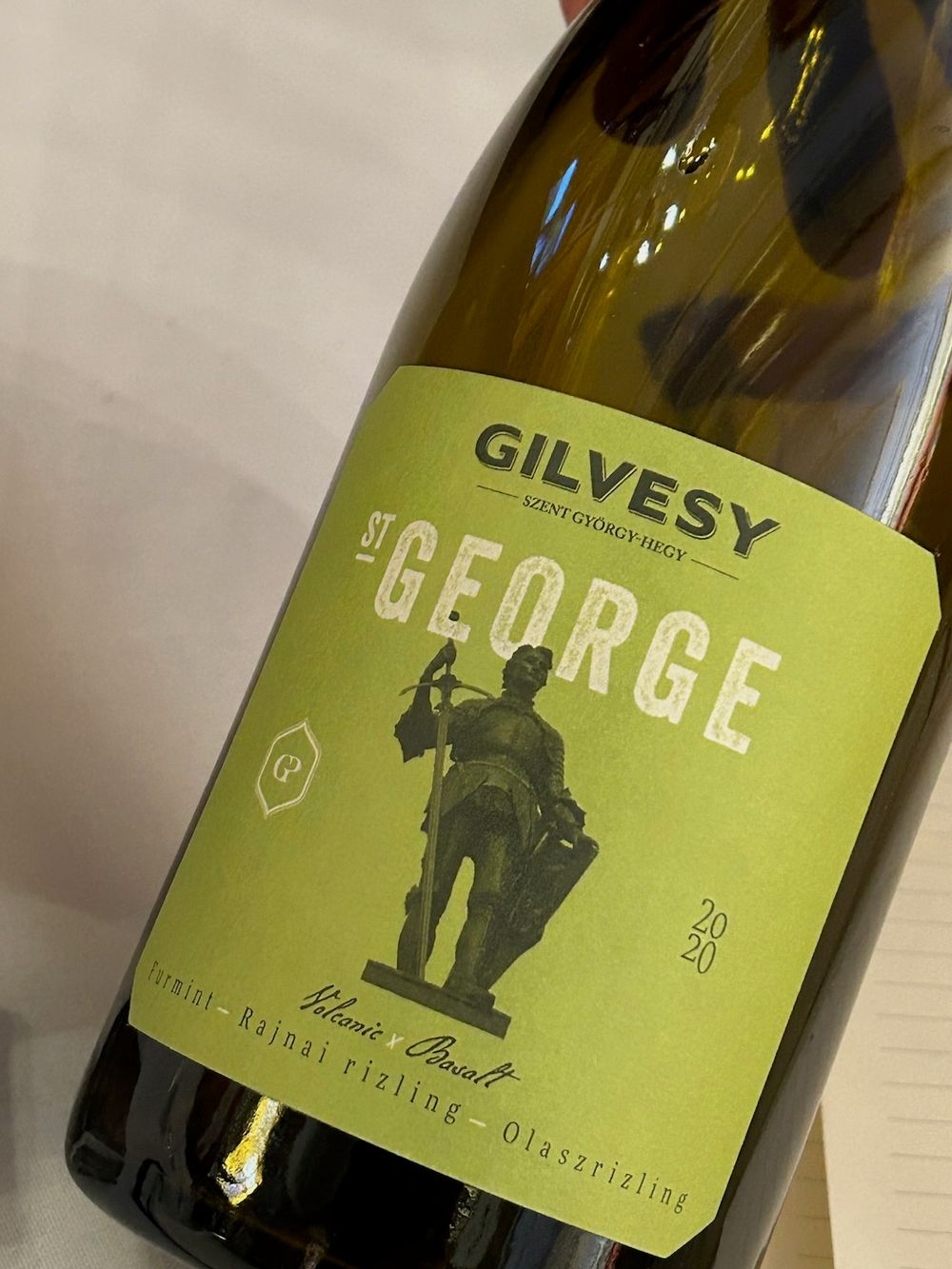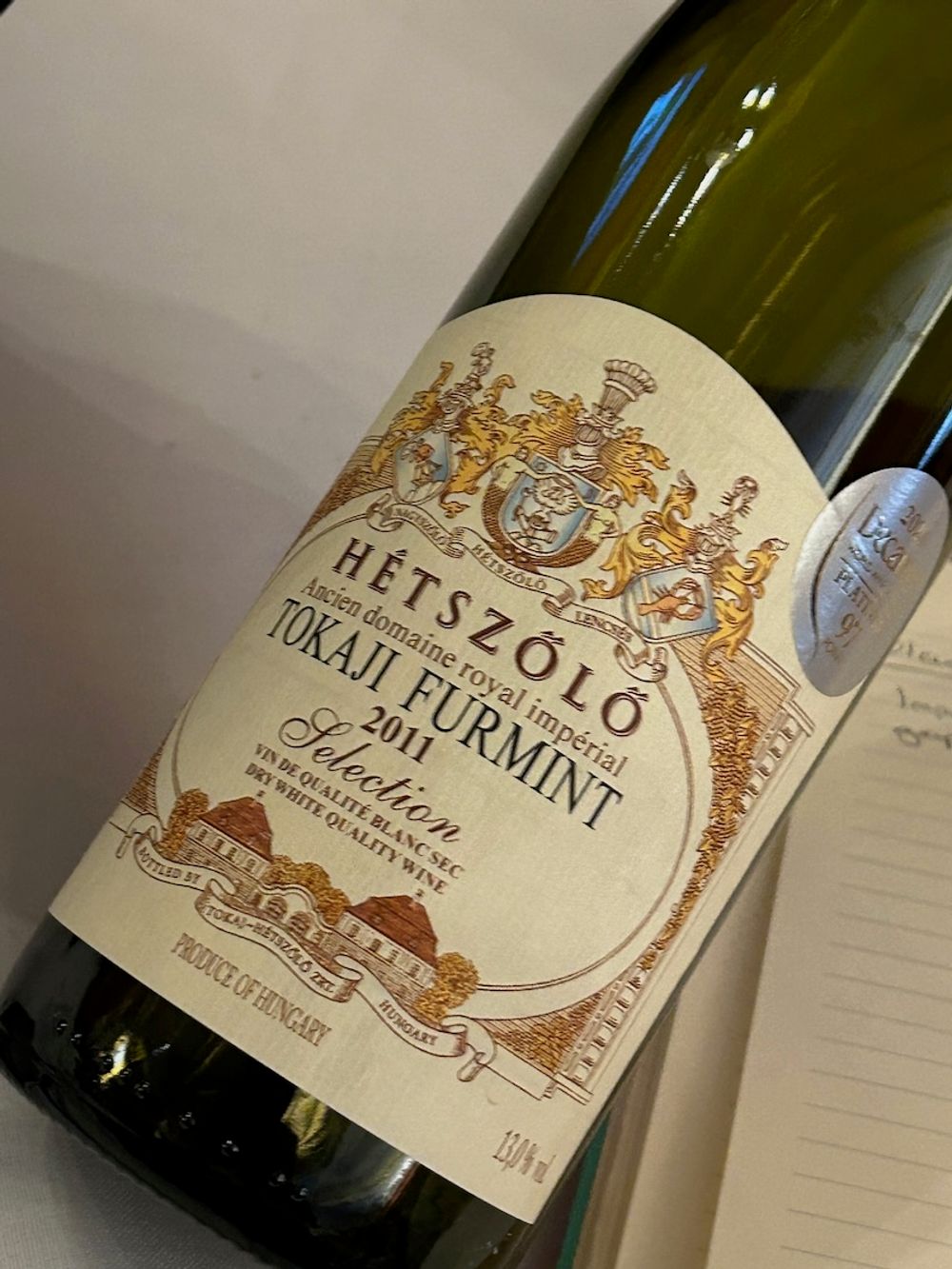I consider myself something of an early adopter of dry Furmints, first captivated more than a decade ago by Dobogó’s wines imported by Liberty. When I put one on a restaurant wine list, certain eyebrows were raised but it became one of our best-selling wines, our bewildered-but-grateful customers loving the distinctive smokey nose, lava-like texture and minerality, also the bold flavours of ripe stone fruits and toasted nuts carried with a thrilling acid zip.
These days, dry Furmints are familiar to most of us, found on in-the-know wine lists and the shelves of savvy merchants, and they are currently enjoying healthy growth. This is at least in part due to the ongoing work of Zsuzsa Toronyi and Wines of Hungary who, along with R&R Drinkers as their PR partners, presented the 6th edition of the annual ‘Furmint February’ tasting at the end of last month.
“The UK is now Hungary’s largest export market, accounting for 20% of its total wine exports,” Toronyi tells me. “And, based on the last five years’ data, it's growing at 20-40% a year; 7.1m bottles at a value of €10.2m in 2022, the most up-to-date stats I have.” Impressive stuff.

Furmint February tasting, London
Furmint has been used for centuries for Tokaj’s famed sweet wines, made from individually picked botrytised grapes that are known as aszú - ‘the wine of kings; the king of wines,” as Louis XIV (maybe) declared in 1703 when he was given a bottle as a gift from Francis II Rákóczi, then Prince of Transylvania and one of Hungary’s richest noblemen.
Dry iterations are a much more recent phenomenon, pioneered by István Szepsy, the eighteenth generation of a family whose winemaking roots go back the 1500s. Historically famed for their Azsú wines (it’s claimed that in 1631 Laczkó Mate Szepsy produced the first written instructions on how to make them), in 2000 István released his first dry Furmint and thus spearheaded the production of these new wines across the Tokaj region and beyond.
Since then, production has skyrocketed. This is partly in response to a declining global market for sweet wines, but also because climate change is making it increasingly hard to grow good Aszú grapes year after year, so it makes economic sense to diversify into dry wines with more reliable and larger yields. “Our Azsus will always be our top wines, but we also need to live,” as István’s son, István Jr, put it at the tasting.
Furmint and Friends

“Now we are seeing increased recognition of local grapes, and the rescuing of almost forgotten varieties." : Caroline Gilby MW
This year, the event was subtitled ‘Furmint and Friends’ and showcased other indigenous grapes alongside Furmint. These were introduced in a masterclass by Caroline Gilby MW, leading specialist on wines from central and eastern Europe who has been travelling to Hungary on wine business for more than three decades.
In that time Gilby has seen a welcome move away from the huge state wineries of the communist era, making high quantity/low quality wines for decades, to the proliferation of private wineries we see today. Some are historic family estates who’ve had their pre-Soviet landholdings restituted by the state, others are new owners from non-wine backgrounds keen to be part of Hungary’s exciting new wine world.
“Furmint has led the way in showing that a local grape can be outstanding in a global context,” said Caroline. “Now we are seeing increased recognition of local grapes, and the rescuing of almost forgotten varieties like Fekete-járdovány, Csokaszölo, Kéknyelű, Laska and more.”
“In the early days of the private era, for many producers it was all about winemaking to add value, so lower yields and more powerful wines but with lots of new oak, malolactic and so on. Today I think the best producers have more confidence in their grapes and land so they can ease back on the winemaking.”
This approach certainly seems to translate into increased sales. “The trend is that more and more wineries are getting listed by UK importers each year,” Toronyi went on. “And from the entry-level Furmints, distributors are picking up the more premium single vineyard wines as well.”
“The terroir story is an important one,” agreed Gilby. “There's much better, more subtle oak use (better quality oak, often Hungarian and often bigger barrels or less new oak) which lets the grapes and terroir speak for themselves.
The younger generation of winemakers, more open-minded and widely travelled than their parents, are increasingly taking the reins, especially in family wineries, and these include a significant number of women winemakers, in Tokaj especially.
“There’s a lot more awareness of the need to be more sustainable too, and more organic producers appearing,” Caroline added.
There was certainly a sense of dynamism in the wines on show, from benchmark examples of traditional styles to those showing a lighter touch and more expression of the grapes and their volcanic terroir; some playful in their styles and packaging in an understandable nod to the younger generation of drinkers. Their prices have been creeping up – inflation in Hungary topped 23% last year – but these wines show that Hungary is booming with diverse, quality, gastronomic wines we should all be enjoying, and that my adored Furmint does, indeed, have many friends worth flirting with as well. Ahead of the curve? Moi?
These are the top ten wines from Furmint February

Szepsy Furmint Urbán 73, 2020
The Szpesy family’s winemaking roots go back the 1500s. Historically famed for their Azsú wines (it’s claimed that in 1631 Laczkó Mate Szepsy produced the first written instructions on how to make them), in 2000 pioneering István Szepsy, the eighteenth generation of the clan, released his first dry Furmint and thus spearheaded production of these new wines across the Tokaj region. RRP £59.99 Top Selection
“I do feel the word genius is not too hyperbolic a word to describe the modest Mr Szepsy,” said Jancis Robinson of István Szepsy in 2010, and who am I to argue? Since then, their wines have continued to impress, showing some tweaks of variation but always sticking to the traditional holy trinity of fermentation in oak, full malo and fermenting to full dryness. His son, István Jr, is now taking over the reins and was showing their wines at the tasting.
Szepsy retain some very old plots, those that survived the communist era because they’re too small or too difficult to farm. This comes from a 0.3 hectare plot planted in 1938, from the 2020 vintage that was excellent for dry wines, terrible for Azsús. So many crunchy, savoury layers of dried apricots, warm peaches, walnuts, grapefruit zest, carried by a searing, flinty minerality.

Sauska Brut NV Tokaj
Sauska was founded in 2005 by Christian and Andrea Sauska who promptly employed a team of top-notch consultants to help them fulfil their dream. With vineyards both in Tokaj and the Villány region, they now operate out of their new gravity-fed, state-of-the-art, space ship-shaped winery opened in 2023 where they make a smart range of sweet, dry and sparkling wines of great precision. It’s a neat collection; this traditional-method fizz really impressed for its price.
Made by Ádam Hanusz, who worked in California, New Zealand and Portugal, then did a stint at Nyetimber before returning home to Hungary and joining the winemaking team here, this Furmint/Chardonnay/Pinot Noir blend is vinified in Tokaj then taken to age on its lees for at least two years in Sauska’s huge cellar in Budapest. Bright bubbles, lemony and pineapple fruit with a very beguiling whiff of smoke. RRP £19.95 Enotria&Coe

Füleky Fülöp 2021 Tokaj, Furmint/Hárslevelű/Sárga muskotály
I sometimes wonder whether part of Furmint’s success is its ease of pronunciation compared with so many of Hungary’s other native grapes. Hárslevelű (roughly harsh-leva-loo) and Sárgamuskotály (sharga-moosh-kotai), for example.
From a new winery whose land stands at 150-200m, not particularly high but high enough to lie above the fog line, so well placed for dry wines, here the Árslevelű puts mid-palate peachy flesh onto Furmint’s sharply acidic skeleton while the Sárgamuskotály brings pretty rose-petal aromatics and a grapey softness. Rounded and beautifully balanced. RRP £16.00 Amathus Drinks

Zsirai Szent Tamás Furmint 2018 Tokaj
Csaba Zsirai began making wine as a hobby, gradually growing to acquire 18 hectares in the top regions of Villány and Somló as well as in Tokaj where he opened Zsirai Winery in 2005. When he died far too young in an accident in 2011, his two 20-something daughters Petra and Kata rose to the challenge of continuing his work - farming with a respect for the environment, experimenting with forgotten native varieties, and making wine with minimal intervention, avoiding chemicals in the vineyard and fermenting using only ambient yeasts.
Doubtless Csaba would be proud of his daughters’ success; Kata was awarded Hungary’s young winemaker of the year in 2018, the year she made this, their first single-vineyard wine made from this famous plot - Szent Tamás - whose varied soils include red clay, weathered zeolite, hard rhyolite, and tuff, and is one of Tokaj’s grand cru vineyards, as demarcated in 1772 when this region became the world’s first to come under appellation control.
A really stunning wine, showing how well Furmint can evolve given some patience - a whiff of petrol on the nose, like a classy Riesling, with lots of concentrated peachy fruit, honeysuckle, lime zest and Furmint’s characteristic lick of lava on the finish. RRP £15.55, Jascots

Kolonics, Juhfark 2022 Somló
No giggling at the back: Juhfark (yoo-fark) is an ancient grape, once prized for its supposed medicinal qualities - curing kidney and liver complaints and aiding those wishing for a boy child (Queen Victoria was a fan for this reason) - then nearly forgotten until its renaissance when it was permitted in the Somló (shom-low) appellation in the 1990s.
Perched on a volcanic hill in the north-west of the country, Somló is Hungary’s smallest PDO, now growing most of Hungary’s Juhfark, as well as other grapes, in its unique, mineral-rich basalt soils.
Károly Kolonics is the fourth generation of the family, sustainably farming 9 hectares using no pesticides, and fermenting with native yeasts in large used barrels. This wine spends 12 hours on the skins, then is aged for 12 months on its lees and another two years in the bottle. Powerful grapefruit acidity with rich, ripe yellow-plum fruit and a slightly smokey nose. Very seductive. RRP £18.00 Wanderlust Wines

Pelle Cellar ‘Borange’ Hárslevelű 2022 Tokaj
My first ever orange Tokaji (Tokaji refers to a wine from the region of Tokaj) and I was not disappointed.
Laszló and Marianna Pelle established the winery in 2007 and make wine from their 4.9 hectares of organic vineyards, some planted in the 50s and 60s, in the Tokaj town of Mád, including some from the premier cru sites of Betsek and Szent Tamás. As of 2022, their winemaker is 27-year-old Máté Nagy, fresh back from a stint at Obsidian in Sonoma after working at his family’s own winery in the Eger region to the south-west.
Around a month’s skin contact gives a bracing crunch to this wine’s lovely aromatics - apple turnovers, almonds and warm apricots - along with a fresh, fruity, tangerine zest finish. RRP £30 The Winemakers Club

Gilvesy Cuvée St George 2020 Furmint/Riesling/Olaszrisling Badacsony, Balaton
Mount Saint George (Szent György-Hegy) is a volcanic mound topped with loess, sand and clay just north of Lake Balaton, Europe’s largest lake and the summer playground for millions of landlocked Hungarians. Robert Gilvesy, Canadian born to Hungarian parents, established the winery in 2012 after working in Paris as an architect, taking on established communist-era vineyards as well as planting his own. Now fully organic, he makes wine with a gentle touch, whole-bunch pressed and naturally fermented.
Olaszrisling (known as Welschriesling in Austria) is grown abundantly here - it is Hungary’s favourite grape, the wine of their holidays, often something of a high-yielding workhorse but, as Caroline Gilby said, with great potential to become the flagship grape across the Balkan regions. It is not related to Riesling, which is often called Rhine Riesling here by way of differentiation.
This mouthwatering cuvée brings Olaszrisling’s bright, lemony freshness to Riesling’s steely, petrol notes and Furmint’s juicy mandarin and orchard fruits; very vibrant with a pleasing chalky texture and a little white-pepper spice. RRP £19.95 Davy’s Wine Merchants

Mád Moser MM5 Furmint Tokaj 2021
A collaboration between the indefatigable Austrian Lenz Moser, whose winemaking family has had business interests in Hungary going back generations, Rita Takaro, local flag-bearer for Tokaj’s wines, Karoly Kovacs, owner of the Mád Winery (yes, in Mád) and his winemaker, Gabor Urbán. Their aim is to deliver top-class wines made in a modern style and packaged to appeal to modern drinkers.
Fermented in stainless steel and with no oak ageing, this sprightly wine has bags of energy - ripe tropical fruits as well as some floral notes, it’s quite hefty at 14% but has great balance of flesh and minerality. RRP £21.95 Alliance Wine

Tokaj-Hétszölö Furmint Dry Selection 2011 Tokaj
An historic winery dating back to 1502 whose name refers to the seven ancient parcels on the southern slopes of the Tokaj hill, classed as premier cru in 1772 when the estate belonged to the Austro-Hungarian Empire. Abandoned during the communist era - the slopes are steep and difficult to work - the vineyards were replanted in 1991, have never used artificial fertilisers, herbicides or insecticides and are now fully certified organic.
A fine example of how well dry Furmints can age; lavish notes of baked apples, apricots and quince, rich and layered with zesty lime and a smoky woodiness. Mesmerising. RRP £37.49 Les Caves de Pyrene

Oremus Tokaji Aszú 6 Puttonyos 2014 Furmint/Zéta/Sárgamuskotály Tokaj
The 33-hectare Oremus estate has been making wine since 1620 and has a maze of cellars dating back to the 13th century. In 1993 it was bought by the Álvarez family, owners of Vega Sicilia, and today (unsurprisingly) makes some of Tokaj’s top wines.
This is exceptional, a great example of the glorious heights that Tokaj’s Aszú wines can reach - silky, peachy, very sweet and dense with concentrated dried apricots, pineapple, marmalade and honey but its laser-sharp acidity stops it being cloying. Incredible length, too. A desert island (and dessert) wine that takes some beating. RRP £97.95 Berkmann Wine Cellars






























